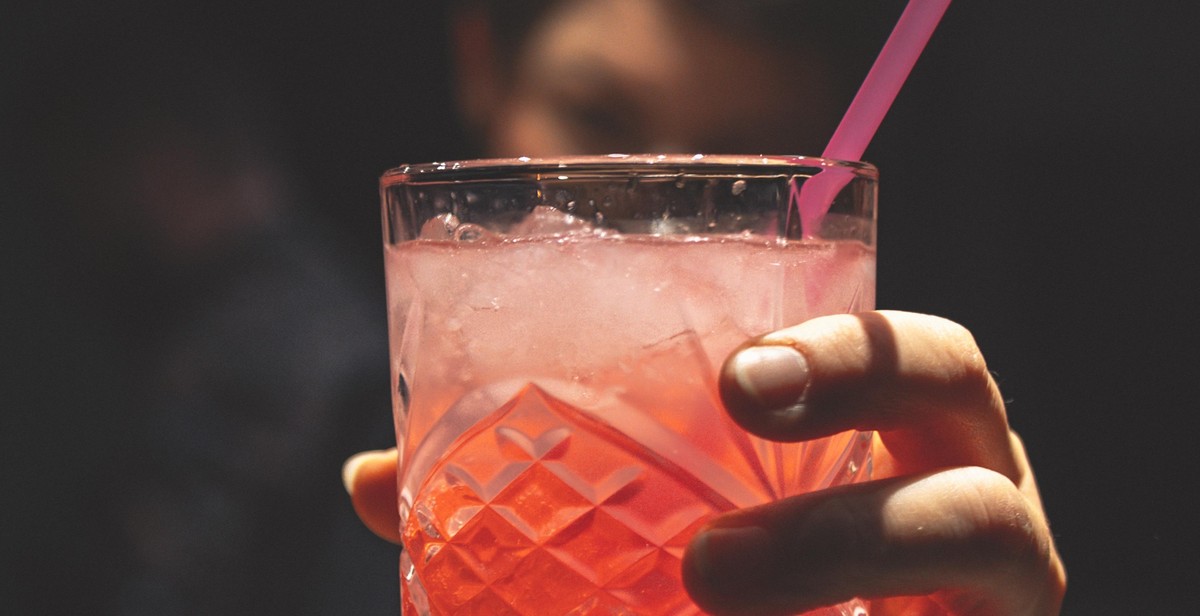Introduction
Gin is a distilled alcoholic beverage that has been enjoyed for centuries. It is made from juniper berries and various botanicals, which give it its distinct flavor and aroma. Gin is a versatile spirit that can be enjoyed in many different ways, from classic cocktails like the Gin and Tonic to more complex drinks like the Negroni.
If you are new to the world of gin, it can be overwhelming to navigate the different types and styles available. However, with a little knowledge and appreciation, you can learn to identify and appreciate the unique characteristics of each gin.
What is Gin?
Gin is a clear spirit that is made by distilling a fermented grain mash. The main flavoring ingredient in gin is juniper berries, which give it its signature piney taste. Other botanicals, such as coriander, citrus peel, and angelica root, are often added to give the gin additional flavor and complexity.
Gin is typically distilled to a high alcohol content, ranging from 40% to 50% ABV. It can be enjoyed neat, on the rocks, or in a variety of cocktails.
In the next sections, we will explore the different types of gin and how to appreciate their unique flavors and aromas.

The History of Gin
Gin is a clear spirit that has been enjoyed for centuries. Its origins can be traced back to the 17th century in the Netherlands, where it was initially created as a medicinal drink. The Dutch used juniper berries and other botanicals to flavor the spirit, which they called jenever. The name gin is derived from the French word genièvre, which means juniper.
The Gin Craze
In the early 18th century, gin became popular in England, and it quickly became known as the “Gin Craze.” At the time, gin was cheap and readily available, making it the drink of choice for the lower classes. Unfortunately, this led to widespread alcoholism and social problems, and gin was eventually blamed for a rise in crime and poverty.
Despite this negative reputation, gin remained popular throughout the 19th and 20th centuries. In the 19th century, gin cocktails became fashionable, and gin was a staple of the British Empire. During Prohibition in the United States, gin was one of the few spirits that could still be legally produced and sold, and it became a popular ingredient in speakeasy cocktails.
Gin Today
Today, gin is experiencing a resurgence in popularity. Craft distilleries are producing high-quality gins using a wide variety of botanicals, and bartenders are creating innovative gin cocktails. Gin is also being enjoyed in new ways, such as in gin and tonic sorbets and gin-infused chocolates.
One of the reasons for gin’s popularity is its versatility. Gin can be used in a wide variety of cocktails, from classic drinks like the Martini and the Gin Fizz to more modern creations like the Aviation and the Bramble. Gin’s botanical flavors also make it a great choice for pairing with food, particularly in dishes that incorporate herbs and spices.
Overall, gin has a rich history and a bright future. Whether you prefer a classic gin and tonic or a modern gin cocktail, there’s no denying the appeal of this delicious and versatile spirit.

The Different Types of Gin
Gin is a spirit that has been enjoyed for centuries. It is a clear, distilled spirit that is flavored with juniper berries and other botanicals. Gin is a versatile spirit that can be enjoyed on its own, as a cocktail ingredient, or as a base for other spirits. There are several different types of gin, each with its own unique flavor profile and production method.
London Dry Gin
London Dry Gin is the most popular type of gin. It is made by distilling a neutral grain spirit with botanicals, including juniper berries, coriander, and citrus peel. London Dry Gin must be made using only natural flavorings, and no sugar or other additives can be used. The resulting gin is dry, crisp, and very aromatic, with a strong juniper flavor.
Plymouth Gin
Plymouth Gin is a type of gin that is made exclusively in Plymouth, England. It is a slightly sweeter gin than London Dry Gin, with a spicier flavor profile. Plymouth Gin is made using a unique blend of botanicals, including angelica root, orris root, and cardamom. It is also slightly less dry than London Dry Gin, with a fuller mouthfeel.
Old Tom Gin
Old Tom Gin is a style of gin that was popular in the 18th and 19th centuries. It is a slightly sweeter gin than London Dry Gin, with a more complex flavor profile. Old Tom Gin is made using a combination of botanicals, including juniper berries, coriander, and licorice root. It is also traditionally sweetened with sugar or honey, giving it a slightly sweet finish.
Genever or Dutch Gin
Genever, also known as Dutch Gin, is a style of gin that originated in the Netherlands. It is made using a mixture of malted barley, corn, and rye, which is then distilled with botanicals, including juniper berries, anise, and coriander. Genever is a slightly sweeter gin than London Dry Gin, with a more complex flavor profile and a slightly malted taste.
New American or International Style Gin
New American or International Style Gin is a modern style of gin that has become increasingly popular in recent years. This type of gin is made using a wide range of botanicals, including non-traditional ingredients such as cucumber, rose petals, and lavender. New American or International Style Gin is typically less juniper-forward than London Dry Gin, with a more complex flavor profile and a smoother finish.
| Type of Gin | Production Method | Flavor Profile | ||||||||||
|---|---|---|---|---|---|---|---|---|---|---|---|---|
| London Dry Gin | Neutral grain spirit distilled with juniper berries, coriander, and citrus peel | Dry, crisp, and very aromatic, with a strong juniper flavor | ||||||||||
| Plymouth Gin | Neutral grain spirit distilled with a unique blend of botanicals, including angelica root, orris root, and cardamom | Slightly sweeter than London Dry Gin, with a spicier flavor profile | ||||||||||
| Old Tom Gin | Neutral grain spirit distilled with a combination of botanicals, including juniper berries, coriander, and licorice root, and sweetened with sugar or honey | Slightly sweeter than London Dry Gin, with a more complex flavor profile | ||||||||||
| Genever or Dutch Gin | Mixture of malted barley, corn, and rye distilled with botanicals, including juniper berries, anise, and coriander | Slightly sweeter than London Dry Gin, with a more complex flavor profile and a slightly malted taste | ||||||||||
| New American or International Style Gin | Neutral grain spirit distilled with a wide range of botanicals, including non-traditional ingredients such as cucumber, rose petals, and lavender | Less juniper-forward than London Dry Gin, with a more complex flavor profile and a smoother finish
How to Appreciate GinGin is a versatile and complex spirit that can be enjoyed in a variety of ways. Whether you prefer it neat, on the rocks, or mixed in a cocktail, there are several things you can do to fully appreciate the flavors and nuances of this beloved liquor. Tasting GinWhen tasting gin, start by pouring a small amount into a glass and swirling it around to release its aromas. Take a sniff and try to identify the different scents. Some common notes in gin include juniper, citrus, and botanicals like coriander and cardamom. Next, take a small sip and let it linger on your tongue. Pay attention to the different flavors and how they evolve over time. Some gins may have a spicy or peppery finish, while others may be more floral or fruity. Remember that everyone’s palate is different, so don’t be afraid to experiment and try different brands and styles of gin to find your favorite. Garnishes and MixersGarnishes and mixers can enhance the flavors of gin and make it even more enjoyable. Some classic garnishes for gin include citrus peels, fresh herbs like rosemary or thyme, and even edible flowers like lavender or hibiscus. When it comes to mixers, tonic water is a classic choice that pairs well with gin. However, don’t be afraid to experiment with other mixers like ginger beer, fruit juices, or even sparkling wine. Best Ways to Enjoy GinThere are many ways to enjoy gin, but some of the most popular include:
Whether you prefer your gin neat or mixed in a cocktail, remember to savor the flavors and aromas and appreciate the craftsmanship that goes into making this beloved spirit.
Identifying Quality GinNot all gins are created equal. To truly appreciate and identify different types of gin, it’s important to understand what makes a quality gin. Here are some factors to consider: Reading LabelsWhen looking at a gin bottle, pay attention to the label. It should clearly state the name of the gin, the distillery where it was made, and the botanicals used. Look for gins that have a higher percentage of botanicals, as this can indicate a higher quality product. Distillation ProcessThe distillation process can greatly affect the quality of a gin. Look for gins that are distilled in small batches or using traditional methods, as this can result in a smoother and more complex flavor. Gins that are distilled multiple times may also be of higher quality. Botanicals UsedThe botanicals used in a gin can greatly affect its flavor and quality. Look for gins that use a variety of botanicals, including juniper berries, coriander, citrus peels, and other herbs and spices. The use of high-quality and fresh botanicals can also indicate a higher quality gin. Alcohol ContentThe alcohol content of a gin can also affect its quality. Look for gins with a higher alcohol percentage, as this can result in a more intense and flavorful gin. However, be cautious as higher alcohol content can also result in a harsher and more aggressive taste.
By paying attention to these factors, you can identify and appreciate a quality gin. Remember to also trust your own taste preferences and experiment with different types of gins to discover your favorites. |

